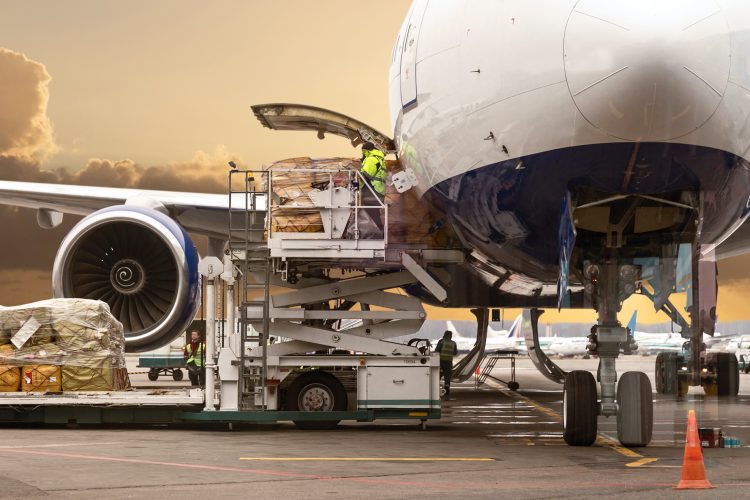January 2023 sees demand for air cargo dip
- Like
- Digg
- Del
- Tumblr
- VKontakte
- Buffer
- Love This
- Odnoklassniki
- Meneame
- Blogger
- Amazon
- Yahoo Mail
- Gmail
- AOL
- Newsvine
- HackerNews
- Evernote
- MySpace
- Mail.ru
- Viadeo
- Line
- Comments
- Yummly
- SMS
- Viber
- Telegram
- Subscribe
- Skype
- Facebook Messenger
- Kakao
- LiveJournal
- Yammer
- Edgar
- Fintel
- Mix
- Instapaper
- Copy Link
Posted: 14 March 2023 | International Airport Review | No comments yet
Owing to a persisting war in Ukraine, high inflation and a shortage of workers, demand for global air cargo has declined. The International Air Transport Association (IATA) released its data for January 2023 global air cargo markets and results show that, in a context of economic headwinds, cargo demand has declined.

January 2023 saw a soft start for demand of air cargo across global markets.
Owing to a persisting war in Ukraine, high inflation and a shortage of workers, demand for global air cargo has declined. The International Air Transport Association (IATA) released its data for January 2023 global air cargo markets and results show that, in a context of economic headwinds, cargo demand has declined. They reported that:
- Global demand, measured in cargo tonne-kilometres (CTKs*), fell by 14.9% compared to January 2022 (which was at 16.2% for international operations)
- Capacity however, measured in available cargo tonne-kilometres (ACTK), was up by 3.9% compared to the same month last year. This was the first year-on-year growth of capacity since October 2022. International cargo capacity also increased from January 2022, at a rate of 1.4%. The rise in ACTKs reflects the strong recovery of belly capacity in passenger airline markets, offsetting a decline international capacity offered by dedicated freighters.
The environment at which air cargo trade is operating in affects demand as follows:
- For major economies, new export orders are growing. In China and the US, PMI levels (the leading indicator of cargo demand) are close to the critical 50-mark, indicating that demand for manufactured goods from the world’s two largest economies is stabilizing. The PMI of global new export orders increased in January for the first time since October 2022
- Global goods trade decreased by 3.0% in December, which was the second monthly decline in a row
- Consumer Price Index for G7 countries decreased from 7.4% in November to 6.7% in January. Inflation in producer prices reduced by 2.2 percentage points to 9.6% in December
Commenting on the behaviour trends for global air cargo, IATA’s Director General said: ”With January cargo demand down 14.9% and capacity up 3.9%, 2023 began under some challenging business conditions. That was accompanied by persistent uncertainties, including war in Ukraine, inflation, and labour shortages. But there is solid ground for some cautious optimism about air cargo. Yields remain higher than pre-pandemic. And China’s much faster than expected shift from its zero COVID policy is stabilizing production conditions in air cargo’s largest source market. That will give a much-needed demand boost as companies increase their engagement with China.”
Below is a dataset showing the fluctuations of air cargo demands across global markets.
January 2023 (% year-on-year) | World share1 | CTK | ACTK | CLF (%-pt)2 | CLF (level)3 |
Total Market | 100.0% | -14.9% | 3.9% | -9.9% | 44.8% |
Africa | 2.0% | -9.5% | -1.8% | -3.8% | 43.9% |
Asia Pacific | 32.4% | -19.0% | 8.8% | -15.5% | 45.2% |
Europe | 21.8% | -20.4% | -9.3% | -7.5% | 54.1% |
Latin America | 2.7% | 4.6% | 34.4% | -9.3% | 32.5% |
Middle East | 13.0% | -11.8% | 9.6% | -10.0% | 41.1% |
North America | 28.1% | -8.7% | 2.3% | -5.1% | 42.3% |
1 Percentage of industry CTKs in 2022
2 Change in load factor
3 Load factor level
January Regional Performance
- Asia-Pacific airlines saw their air cargo volumes decrease by 19% in January 2023 compared to January 2022. This was an improvement in performance compared to December (-21.2%). Airlines in the region continue to be impacted by lower levels of trade and manufacturing activity. Couple this with the residual effects of COVID-19 restrictions imposed on China and the positioning of Lunar New Year, the supply chains and volumes of cargos have been disrupted in January. However, available capacity in the region increased by 8.8% compared to the same month last year.
- North American carriers posted an 8.7% decrease in cargo volumes in January 2023 in contrast with January 2022. This was a slight decrease in performance compared to December (-8.5%). Despite this, capacity increased 2.3% compared to January 2022.
- European carriers saw the weakest performance of all regions with a 20.4% decrease in cargo volumes in January 2023 compared to the same month in 2022. This was also a decrease in performance compared to December (-19.4%). Airlines in the region continue to be most affected by the war in Ukraine. Unfortunately, capacity also suffered, decreasing 9.3% in January 2023 compared to January 2022.
- Middle Eastern carriers experienced a 11.8% year-on-year decrease in cargo volumes in January 2023. This was an improvement to the previous month (-14.4%) and capacity also increased 9.6% compared to January 2022.
- Latin American carriers reported the strongest performance of all regions, with a 4.6% increase in cargo volumes in January 2023 compared to January 2022. This was a significant improvement in performance compared to December which saw no growth. Capacity in January was up 34.4% compared to the same month in 2022.
- African airlines saw cargo volumes decrease by 9.5% in January 2023 compared to January 2022. This was an improvement in performance compared to the previous month (-10%), although capacity was 1.8% below January 2022 levels.
IATA statistics cover international and domestic scheduled air cargo for IATA member and non-member airlines. For further information, please view the January Air Cargo Market Analysis.
Related topics
Air freight and cargo, Airside operations, Baggage handling, Cargo, Economy, Ground handling, Operational efficiency
Related organisations
Related regions
Africa, Asia Pacific and Oceania, Central and South America, Europe, Middle East









 Chief Executive Officer
Chief Executive Officer CEO
CEO Chief Operating Officer
Chief Operating Officer Head of Operations, Safety and Emergency
Head of Operations, Safety and Emergency Chief Strategy Development Officer
Chief Strategy Development Officer Head of Operations
Head of Operations Airport General Manager
Airport General Manager CEO
CEO Chief Executive Officer
Chief Executive Officer